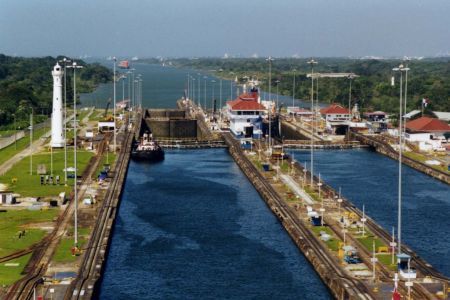
The Panama Canal Authority (ACP) has made a proposal for a new toll structure, following more than a year of informal consultations with representatives from various industry segments.
The proposed restructuring calls for each segment to be priced based upon different units of measurement, while aligning with customers’ needs and requests, and modifying pricing for all Canal segments. For instance, containers will be measured and priced on TEUs, dry bulkers will be based on deadweight tonnage capacity and metric tons of cargo, passenger vessels will be based on berths, LNG will be based on cubic meters and tankers will be measured and priced on Panama Canal tons and metric tons.
The new structure will apply to the existing Canal as well as the new lane of traffic when the expansion project begins operation in 2016. The new locks will allow shipping lines to transit the Canal with larger ships, providing greater economies of scale. Moreover, the expansion will open new global shipping routes and allow the transit of non-traditional commodities through the waterway, such as Liquefied Natural Gas (LNG).
For the first time, the ACP is proposing a customer-loyalty program for the container segment. Frequent container customers will receive premium prices, once a particular TEU volume is reached. The proposed tolls include significant reductions in the capacity-based charge, and price differentiation based on vessel size ranges. With this framework, the ACP shares with its customers the risks associated with fluctuating economic conditions and lower-utilization return voyages.
The proposed tolls structure includes tolls for LNG vessels, a new trade for the Panama Canal. Currently, LNG vessels cannot transit through the waterway due to their beam dimensions, which are too wide to fit the existing locks. The proposed unit of measurement for LNG vessels is the cubic meter, which is widely used in LNG shipping and will ease the calculations of tolls for new customers to the Panama Canal. The new toll structure will also provide an incentive for the new LNG segment, where customers that use the same vessel for a roundtrip voyage through the Canal will have the option of receiving a special ballast fee, if the transit in ballast is made within sixty days after the laden transit was completed.
When it comes to dry bulk, the proposed structure provides for differentiated toll rates for bulk carriers carrying grains, coal, iron ore and other dry bulk cargoes. These rates have been designed to encourage the deployment of larger vessels through the waterway. Dry bulk vessels transiting the Panamax locks will be charged a capacity price based on the vessel’s deadweight tonnage. Dry bulk vessels transiting through the new locks will use a capacity price based on the vessel’s deadweight tonnage and a cargo charge based on the amount of cargo on-board the vessel in metric tons.
Tankers transiting the Panamax locks will be charged a fixed price based on the Panama Canal Universal Measurement System (PC/UMS) tonnage. Tankers transiting the new locks will be applied a capacity price based on PC/UMS tonnage and a cargo carried pricing scheme based on metric tons. Reduced ballast rates will be provided in the tanker segment to attract vessels on their return voyage.
For LPG carriers, the proposal substitutes PC/UMS with cubic meters, the widely used industry standard for the transportation of liquefied gases in bulk, such as propane, butane and ethylene, and for
The Panama Canal ton PC/UMS is maintained as the unit of measurement for vehicle carriers and roll-on/roll-off vessels. The proposal incorporates vessel utilization as a factor in the determination of tolls.
The new toll structure proposal for passenger transportation includes a differentiated tolls system based on berths, that varies depending on the locks in which the vessels are deployed. Panamax-sized cruise ships will pay USD 144 per berth, while ships deployed through the new locks will pay USD 154 per berth.
The adjustments for all market segments, except for the new Intra Maritime Cluster Segment, are scheduled to begin in April of 2016.
”The ACP thoroughly analyzed various alternatives and held conversations with the maritime industry for over a year. The proposal, in its current form, safeguards the competitiveness of the waterway, charges a fair price for the value of the route and facilitates the Canal´s goal of providing impeccable service to the global shipping and maritime community,” said ACP Administrator/CEO Jorge Luis Quijano.
We use cookies to improve your experience. By continuing to use our site, you accept our Cookies, Privacy Policy,Terms and Conditions. Close X